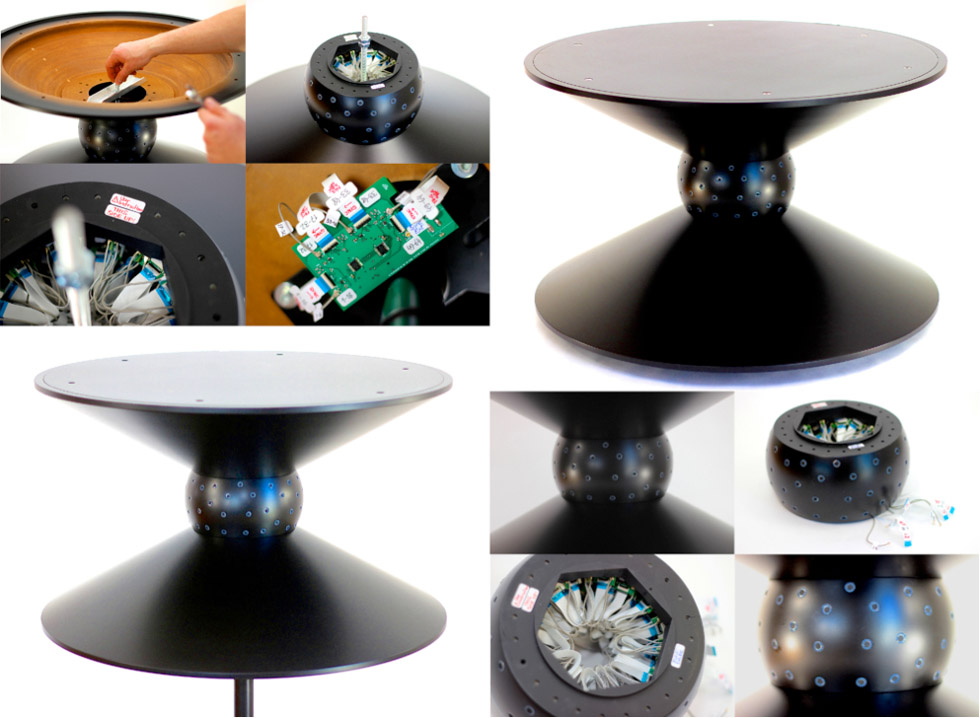
Tell us a little bit about yourself: Where are you from? What do you study? How did you discover your passion for audio?
I'm from Salzburg, Austria and studied Electrical Engineering / Audio Engineering at the University of Music and Performing Arts and the University of Technology, respectively, in Graz, Austria. During my studies, I specialized in spatial audio and 3D sound recording technology to write my diploma thesis with the title 'A Rigid Double Cone Microphone Array Prototype'.
Are you a musician yourself? Which instruments do you play and in what context?
At the age of 9 I started playing the violin. Eight years later I took my first piano lessons. On both instruments I was educated in a classical context. I was member of two Rock/Beat bands as guitarist and singer.
Tell us about your project. What is it? What is the story behind it?
The initial idea to build a new microphone array prototype is based on two basic questions: "How can we exclude sound from unwanted directions?" and "How can we enhance the resolution on a restricted angular range without increased hardware effort?"

Florian's Double Cone Microphone Array
The new array design deviates from the spherical geometry and considers the introduction of a rigid double cone while the array microphones are distributed on the confined spherical segment. The main advantage of this step is the physical exclusion of unwanted sound directions instead of a removal through identification. Compared to a full spherical array, this permits an increased density of microphones for the desired panoramic recording angle without increased electronic hardware effort. Moreover, this is expected to improve the noise behaviour and the resolution on the limited angular range.
The prototype was designed and built throughout my diploma thesis at the Institute of Electronic Music and Acoustics Graz (IEM) within one year and was my first entry in the student design competition.
Accidents happen: What was your biggest mistake during a project what did you do to redeem the situation?
Any accident with the array hardware would have been really expensive so I planned each design step in detail to avoid mistakes. One of my tasks was to find a robust arrangement of the 64 array microphones to achieve high-quality sound field decomposition. Although I simulated the obtained sensor distribution in advance using true to scale microphone models I worried about the practicability of the prototype, as the space was critically limited. Fortunately, everything worked fine in the end and I succeeded in assembling the spherical segment with the array microphones.
What’s your advice for software or hardware designers who are just starting out?
Simulations are essential and should be as accurate as possible to avoid time-consuming and/or expensive repetitions of design steps – nonetheless, always be prepared for surprises in practice!
What do you like about the AES?
The idea of networking at conventions in combination with a scientific forum (journals, papers) helps not only to meet and talk to specialists of different audio fields but also to improve my knowledge.
Tell us about your favourite experiences at the 134th AES Convention in Rome!
I was pleased to be one of the finalists at the student design competition. The tabletop exhibition was a lot of fun but also a challenging task as there were plenty of expert questions to be answered. Aside from the convention, I was really impressed by Rome!
What are you up to when you’re not doing anything related to audio?
There is a long list of hobbies which have to fit in a small window of spare time. For example, I like doing sports like tennis, cycling, hiking, ski touring or sailing, just to name a few.
Where do you see yourself in 10 years?
That is a tough question! I probably pursue doing research either at university or in the R&D department of a not too big company.
Posted: Monday, August 25, 2014
« AES 134 - Meet the Winners #8: Josef Schauer | Main | AES 137 - Student Recording Competition… »
